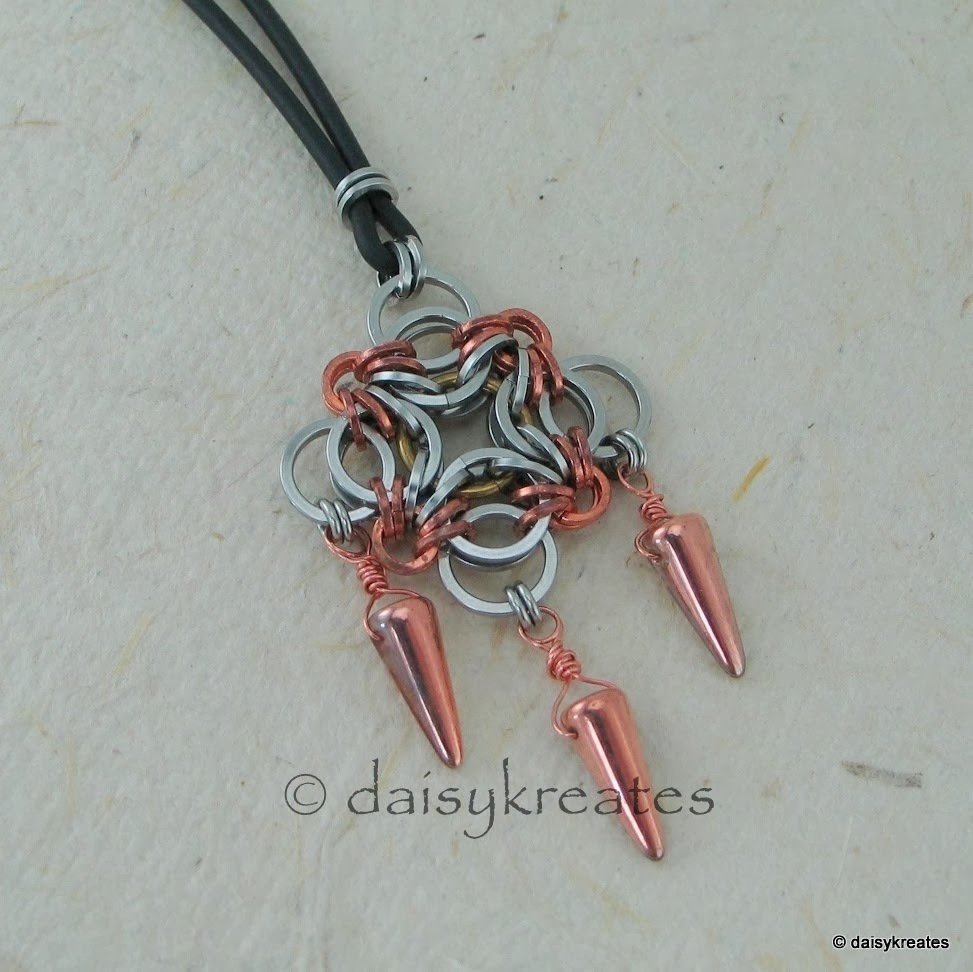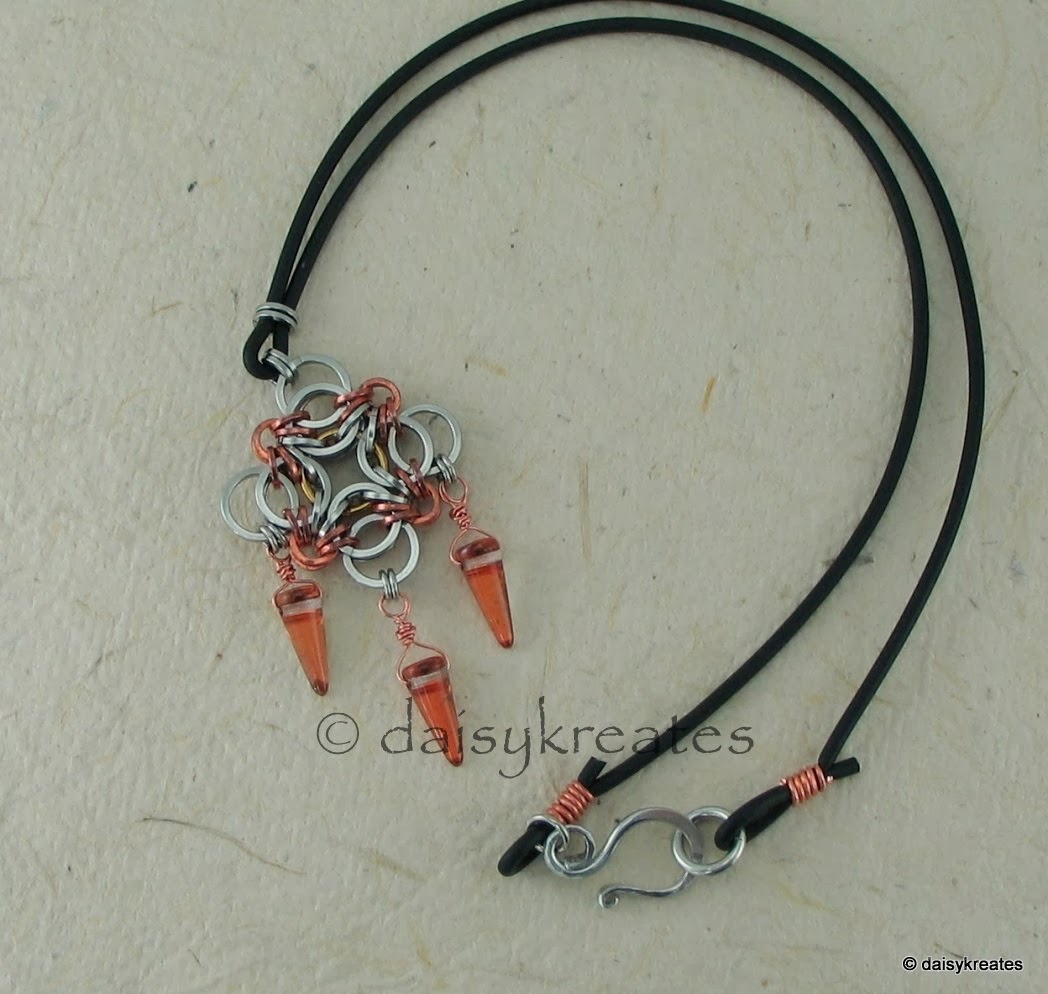My very first contact with chainmaille was a Byzantine chain, as demo'ed by David Scott Plumlee on an episode of Beads, Baubles, and Jewels. I was hooked by how the tiny little jump rings of exactly same sizes and shapes morphed into this mesmerizing pattern.
I'll bet I'm not the only one that started their chainmaille addiction, uh, I meant "journey", from this weave:-)
There's a reason for this Byzantine Effect; and this Celtic Labyrinth pendant is a good example. Look closely and you'll see this weave is another play on the same weave but with rings of rather different AR's.
So, what about December? Right, the other weave that actually works exactly the same way as Celtic Labyrinth, but with different number of points; December as it's recorded in MAIL weave library has 6 points; Celtic Labyrinth has 4. Those who came to chainmaille before me had already discussed this on MAIL.
I experimented with a few 5 pointed ones in different AR combinations.
Isn't it amazing that while they are all made in the same manner, the results are quite different, even with some 3-D effect!
Be it Celtic Labyrinth (Unit) or December, the influence of Byzantine is not hard to see, and I now have a much deeper appreciation for Byzantine weave's versatility.
Any insight learnt from making this pendant? When needed, square wire rings are quite excellent in increasing the stability of the weave. Now you know!! :-)
More views of the pendant, as well as my experiments, are here and here in my Picasa web albums.
I experimented with a few 5 pointed ones in different AR combinations.
Isn't it amazing that while they are all made in the same manner, the results are quite different, even with some 3-D effect!
Be it Celtic Labyrinth (Unit) or December, the influence of Byzantine is not hard to see, and I now have a much deeper appreciation for Byzantine weave's versatility.
Any insight learnt from making this pendant? When needed, square wire rings are quite excellent in increasing the stability of the weave. Now you know!! :-)
More views of the pendant, as well as my experiments, are here and here in my Picasa web albums.




